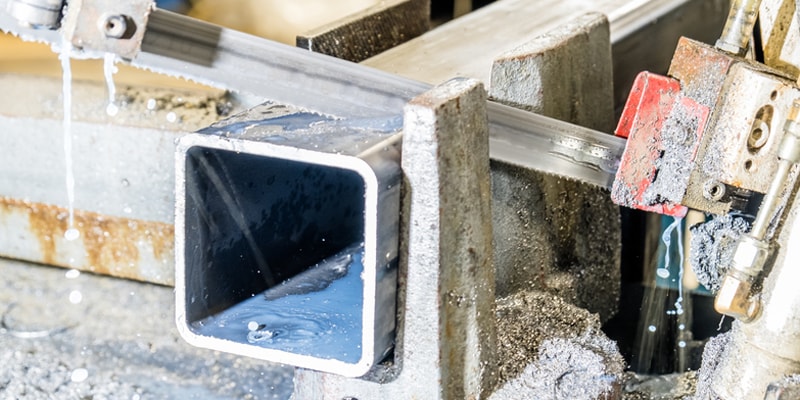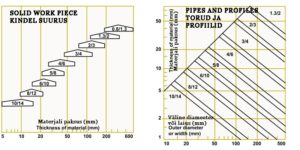Choosing the right bandsaw blade depends on several factors: firstly, the type of bandsaw and cutting conditions; secondly, the type of material to be cut and the intended cutting method. One bandsaw blade is not meant for cutting just any material, as each cutting event requires a specific blade.
In order to achieve the desired outcome when cutting different materials, we suggest reading the following instructions to help you make the right choice:
- What type of bandsaw do I need?
If the bandsaw is intended for cutting metal, use carbon tool steel or bi-metal steel blades. Carbon tool steel is more affordable than bi-metal steel; however, bi-metal blades have a longer lifetime and they can be used also for cutting harder materials. If the bandsaw is meant for cutting wood, use bandsaw blades made of carbon tool steel.
- Length and width of the bandsaw blade
To choose the proper length for the bandsaw blade, please refer to the benchtop bandsaw specification. However, you have to decide for yourself how wide the bandsaw blade should be. The width of a blade is measured from the tip of the tooth to the back of the blade. Bandsaw blades come in a single width for horizontal metal cutting yet in a variety of widths for vertical metal cutting and wood cutting. For example, contour cutting requires a bandsaw blade as wide as the saw allows, but narrow enough to saw the desired contour. A general recommendation would be to rather use wider blades because they are stronger and more resistant to pressure.
- Number of teeth and tooth form
The number of teeth per millimetre (or inch) determines the bandsaw blade tooth set and may range from 0.8 to 24. Although wood cutting makes use of a smaller number of teeth, making cutting faster, the finish is uneven. A greater number of teeth per millimetre (or inch) yields better results, but the cutting process is slower. When it comes to metal cutting, the number of teeth per millimetre (or inch) depends on the thickness of a material: thicker metal requires fewer teeth and thinner metal requires more teeth.
And lastly, tooth form – you can choose between an alternate set and a raker set. Bandsaw blades with an alternate tooth set are used, for example, for cutting abrasive materials, non-ferrous metal, wood and plastics. Bandsaw blades with a raker set are multi-purpose blades used for cutting heavy metal and reducing vibration.
To find the correct tooth set, use tooth set guide tables and always consult our experts. You will then see that choosing the right bandsaw blade is not that difficult!


